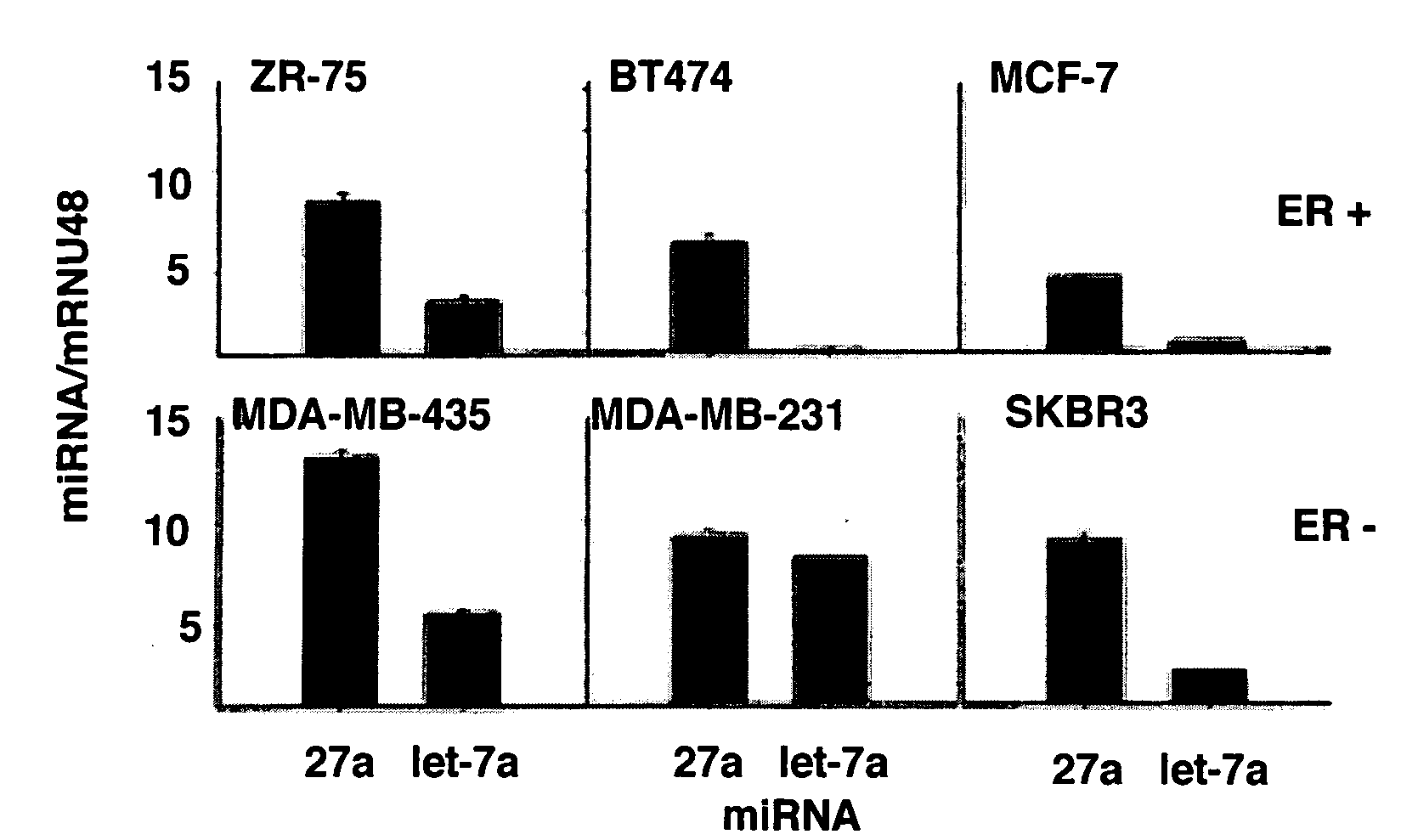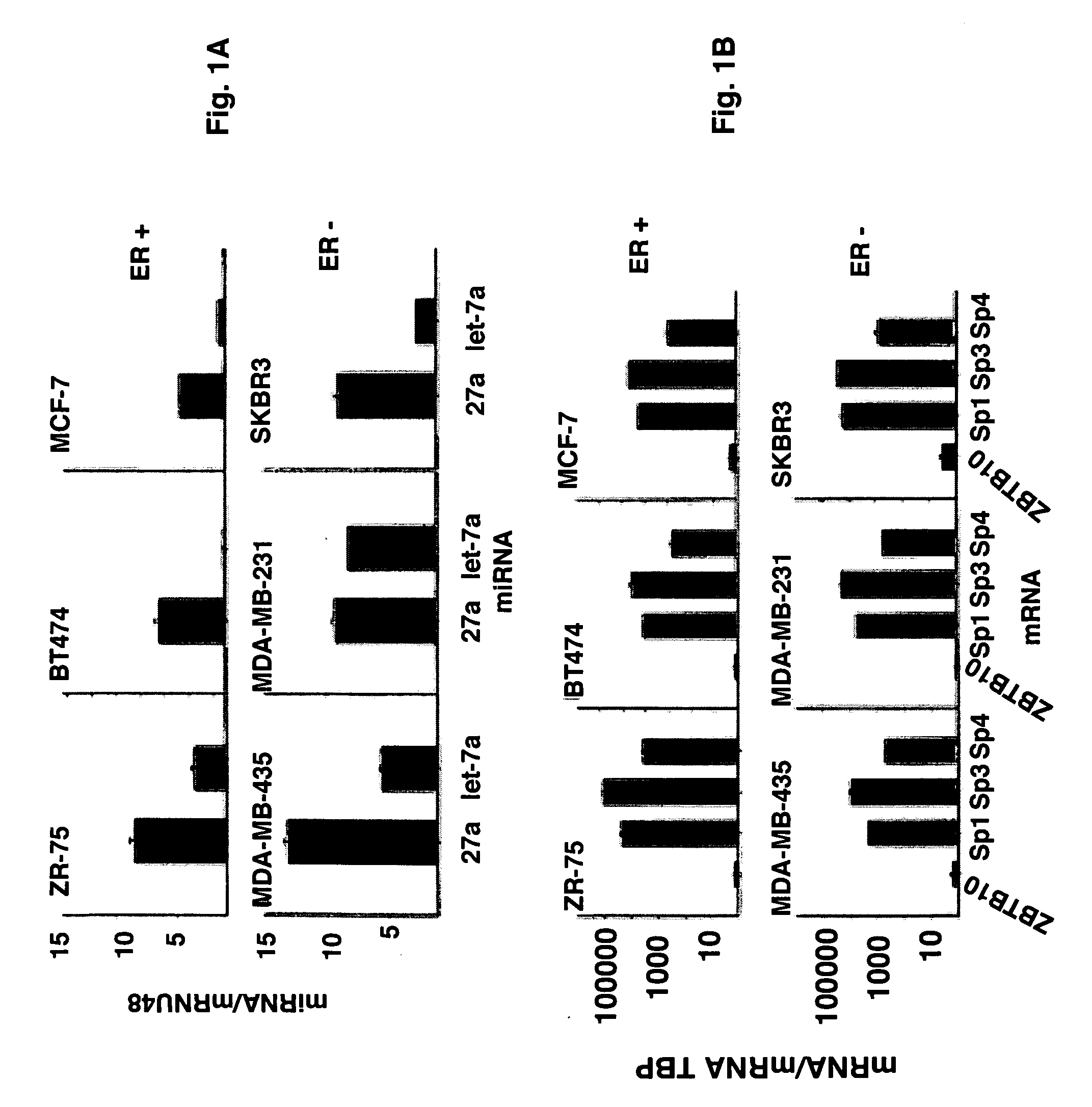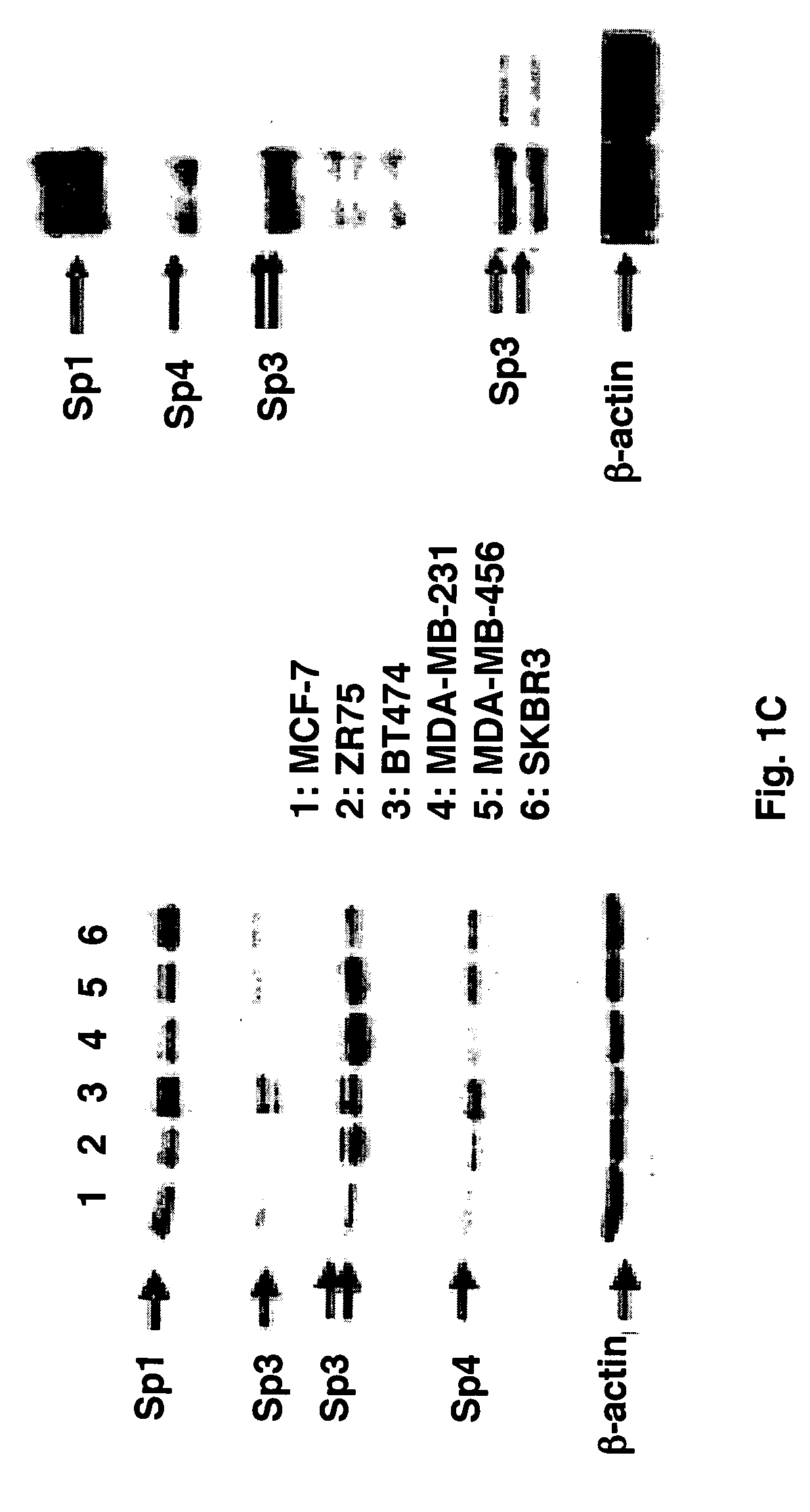Antisense microRNA and uses therefor
a microrna and antisense technology, applied in the field of molecular biology and oncology, can solve the problems of deficient methods utilizing antisense or related technologies in the prior art, and achieve the effects of suppressing specificity protein activity, increasing expression, and provoking cell cycle arres
- Summary
- Abstract
- Description
- Claims
- Application Information
AI Technical Summary
Benefits of technology
Problems solved by technology
Method used
Image
Examples
example 1
Plasmids, Antibodies and Reagents
[0045]Sp1 and Sp3 promoter constructs were provided by Drs. Carlos Cuidad and Veronique Noe (University of Barcelona, Barcelona, Spain). The pVEGF-133 construct contain VEGF promoter insert (positions −131 to +54) linked to luciferase reporter gene. The pSurvivin-269 was provided by Dr. M. Zhou (Emory University, Atlanta, Ga.). The pCMV6-XL4-ZBTB10 expression vector and empty vector (pCMV6-XL4) were from Origene (Rockville, Md.). Antibodies for Sp1, Sp3, Sp4, VEGF and VEGFR1 were purchased from Santa Cruz Biotechnology, Inc. (Santa Cruz, Calif.). c-PARP and survivin antibodies were from Cell Signaling Technology Inc. (Danvers, Mass.). Monoclonal β-actin antibody was purchased from Sigma-Aldrich. Reporter lysis buffer, and luciferase reagent for luciferase studies were supplied by Promega (Madison, Wis.). β-Galactosidase (i-Gal) reagent was obtained from Tropix (Bedford, Mass.), and LipofectAMINE 2000 reagent was purchased from Invitrogen (Carlsbad, C...
example 2
Expression of miR-27a and SP Proteins in Breast Cancer Cells
[0051]MiR-27a expression has been identified in multiple cancer cell lines by Northern blot analysis. FIG. 1A summarizes expression of miR-27a relative to miR-49 in ER-positive ZR-75, BT474 and MCF-7 and ER-negative MDA-MB-435, MDA-MB-231 and SKBR3 breast cancer cell lines. MiR-49, which was expressed in all cell lines, was used to normalize relative expression of miR-27a. Similar results were obtained using U6 snRNA as a normalizing RNA. The miR let-7 family are cancer-associated tumor suppressors (30-34). FIG. 1A also compares miR-27a and let-71 expression in breast cancer cells. Levels of the former miR tended to be higher in all six breast cancer lines. Using a similar approach, it was determined that expression of Sp1, Sp3, Sp4, and ZBTB10 mRNA, relative to TBP mRNA, and the Sp mRNAs were more highly expressed than ZBTB10 mRNA in the six cell lines (FIG. 1B). It has been demonstrated that Sp1, Sp3 and Sp4 proteins are ...
example 3
Effects of as-miR-27a on ZBTB10 and Sp mRNA and Promoter Expression
[0052]The role of miR-27a in mediating expression of ZBTB10 and the downstream effects of this Sp repressor were investigated using a miR-27a antisense construct in MDA-MB-231 cells. FIG. 2A demonstrates that antisense miR-27a (as-miR-27a) decreased miR-27a expression of miR-7a and miR-17-5p were unchanged, demonstrating the specificity of the antisense construct. Transfection with as-miR-27a in MDA-MB-231 cells also increased ZBTB10 mRNA levels (FIG. 2B). FIG. 2C summarizes the effects of as-miR-27a on transactivation in MDA-MB-231 cells transfected with pSp1For4 which contains the −751 to −20 region of the Sp1 gene promoter (35). This shows the dose-dependent decrease in luciferase activity in MDA-MB-231 cells transfected with pSp1For4 and 12.5-100 ng as-miR-27a. As-miR-27a decreased luciferase activity in MDA-MB-231 cells transfected with Sp1For4 and the Sp1For2 and Sp1For1 deletion constructs. Transfection of dif...
PUM
| Property | Measurement | Unit |
|---|---|---|
| real time PCR | aaaaa | aaaaa |
| real time PCR | aaaaa | aaaaa |
| structure | aaaaa | aaaaa |
Abstract
Description
Claims
Application Information
 Login to View More
Login to View More - R&D
- Intellectual Property
- Life Sciences
- Materials
- Tech Scout
- Unparalleled Data Quality
- Higher Quality Content
- 60% Fewer Hallucinations
Browse by: Latest US Patents, China's latest patents, Technical Efficacy Thesaurus, Application Domain, Technology Topic, Popular Technical Reports.
© 2025 PatSnap. All rights reserved.Legal|Privacy policy|Modern Slavery Act Transparency Statement|Sitemap|About US| Contact US: help@patsnap.com



